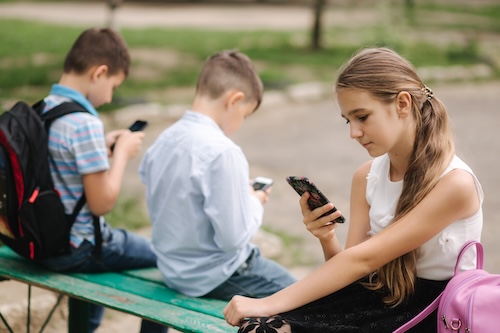How can educators help students navigate emotion-laden information on digital media?
Schools provide a unique platform in supporting children with emotion-laden information on digital media, given the frequent use of digital media in teaching and learning.


Key points:
- It is vital to equip and empower students with media literacy at school
- Student mental health needs grow as challenges persist
- Simple steps to navigate difficult classroom discussions
- For more news on student well-being, visit eSN’s SEL & Well-Being hub
Social media is a form of digital media that focuses on platforms for social interaction and content, such as Facebook, Instagram, TikTok, and YouTube. In November 2024, Australia became the first country in the world to ban children under age 16 from social media. In January 2025, Florida became the first state in the United States to ban children under 14 from social media, with parent/guardian permission required for children aged 14 or 15. Many states are pushing for cellphone bans in schools, with California, Florida, Indiana, Louisiana, Minnesota, Ohio, South Carolina and Virginia enacting measures banning or restricting student use of cellphones. These legislations seek to protect children from addictive algorithms (e.g., curated content, personalized feeds) as well as inappropriate and harmful content (e.g., sexually explicit material, graphic violence, hate speech, cyberbullying, misinformation) on social media.
Social media, however, is just one form of digital media. It may be more helpful to support children in navigating emotion-laden content across all forms of digital media, including search engines, online forums, and podcasts. Algorithms impact the visibility and reach of content and influence what children (and adults) see and engage with online. Algorithms also amplify information that is contentious, sensational, or polarizing. It contributes to information bubbles where children (and adults) only see part of the bigger picture. Children are overloaded with and perseverate on this incessant stream of emotion-laden information, which takes a toll on them.
Repetitive thinking of emotion-laden online information can be adaptive when the focus is constructive or short-term. It enhances reflection and facilitates insight. Imagine 13-year-old Riley, who feels sad and confused when viewing footage of the war in Gaza, deciding to learn more about the Israel–Palestine history. Or 15-year-old Ruth, who feels powerless and thinks about news on climate change, contemplating civic opportunities in her school and community.
Repetitive thinking of emotion-laden online information, however, can be maladaptive when the focus is negative or long-term. It magnifies negative emotions and thoughts (brooding or rumination) that interfere with day-to-day life. Imagine 16-year-old Raphael, who worries about mass shootings and thinks about it all day, struggling to engage and participate in class. Or 15-year-old Riya, who stays up all night reading online forums or listening to podcasts on school shootings, reinforcing a negative cycle of thoughts about safety in the classroom.
Schools provide a unique platform in supporting children with emotion-laden information on digital media, given the frequent use of digital media in teaching and learning. What can educators do to help students right-size emotion-laden content across all forms of digital media?
To reduce maladaptive repetitive thinking, educators can use simple grounding exercises to interrupt repetitive thoughts, such as asking students to name five things they see, four things they hear, and three things they can touch. Or even counting backwards from 20. Educators can also schedule a daily 10-minute quiet time during the first period and let students think about whatever they want. Students may jot down and “park” all the thoughts they have in a journal or notebook. Educators should make sure students move to something more productive when quiet time is up, reminding them that they will have time to think more tomorrow.
To promote adaptive repetitive thinking, educators can address unpleasant emotions that students may experience with content on digital media, such as sadness, anger, worry, or confusion. As knowing bits and pieces of a topic can result in misinformation, disinformation, or malinformation, ask students to list all emotions and thoughts they have about the topic and fact-check each thought as true or false. Students should further classify each thought as helpful or unhelpful. If none were true or helpful, provide them with 1-2 true and helpful thoughts on the topic.
Additionally, it is vital to equip and empower students with media literacy at school. Free curriculum and resources on media literacy are provided by the Digital Inquiry Group, which teaches lateral reading to help students evaluate information online that affects them, their communities, and the world. Educators can help students navigate digital media by reducing brooding/rumination and supporting reflection/contemplation of emotion-laden content online.











![How to Build Scalable Access Control for Your Web App [Full Handbook]](https://cdn.hashnode.com/res/hashnode/image/upload/v1738695897990/7a5962ce-9c4a-4e7c-bdeb-520dccc5d240.png?#)































































